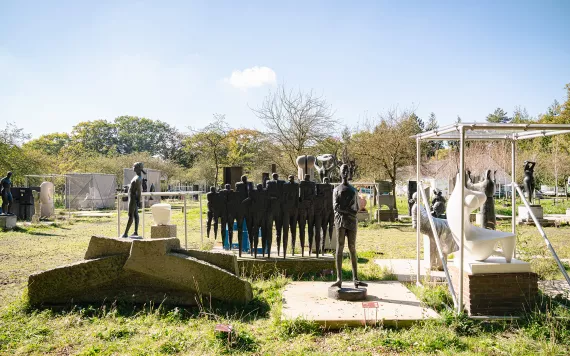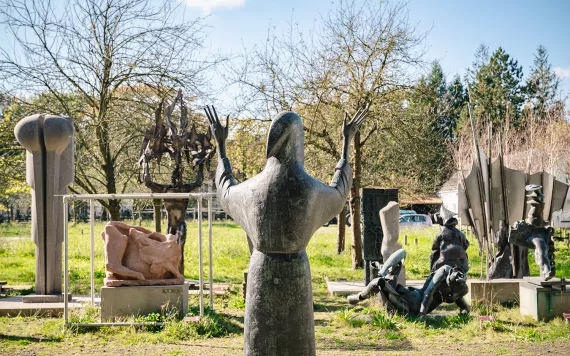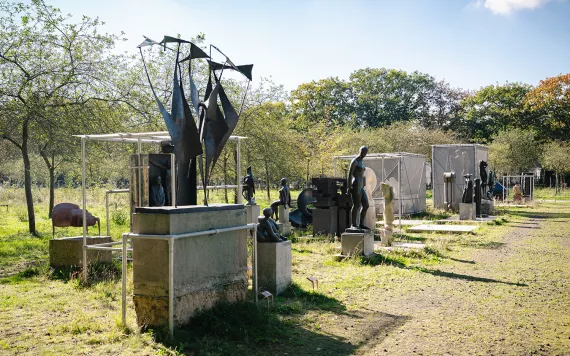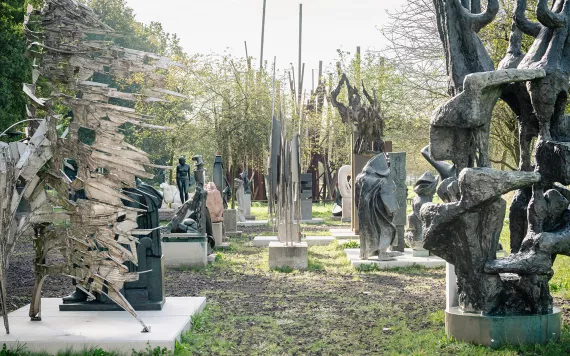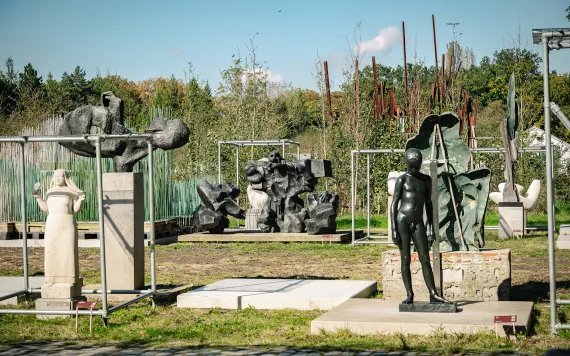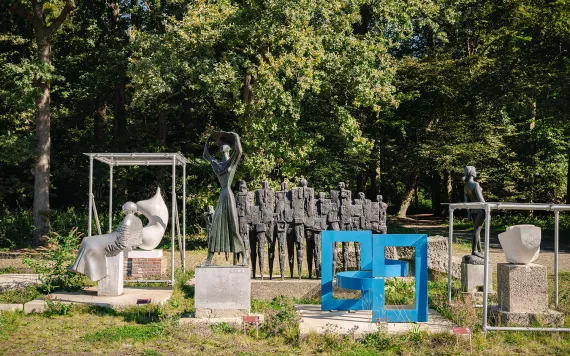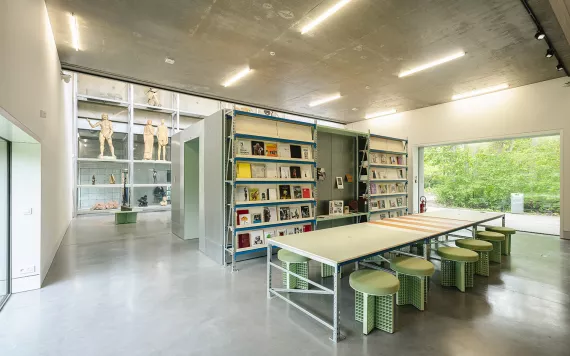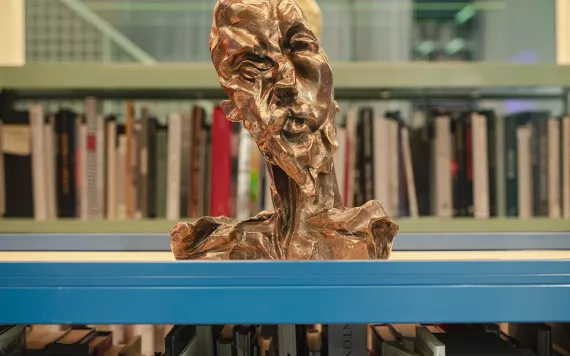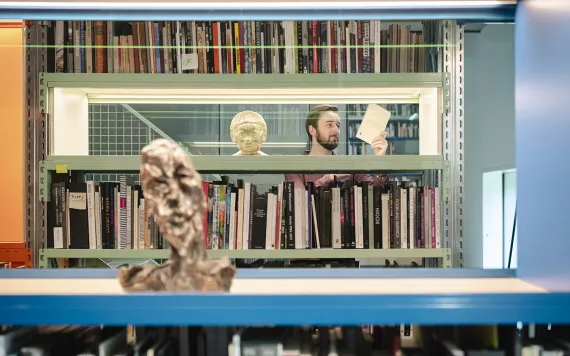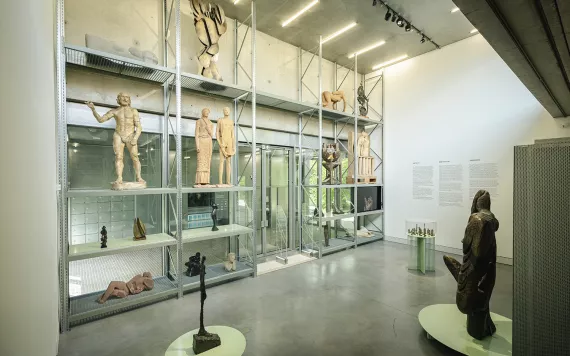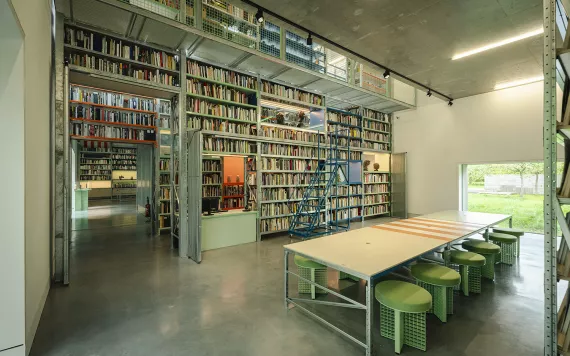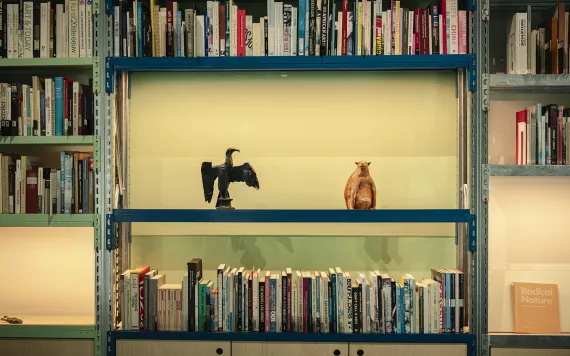
Sustainable storages
Modern and contemporary sculptures in a public park
By rethinking and reorganizing the indoor and outdoor depots, 99% of the Middelheim collection is sustainably preserved on the museum site. The proximity makes research and management of the collection easier. Visitors have maximum access to the collection and museum operations.
Art park on the outskirts of the city
First Open Air Museum in Europa
The city of Antwerp bought three historic castle grounds in 1911 to turn them into a public park. In the summer of 1950, the city organized an exhibition on 20th-century sculpture. This exhibition was a great international success, leading to the establishment of the first Open Air Museum of Sculpture Middelheim the same year. A scoop for Europe.
Admission was free and still is. Nature and culture are inseparable at the Middelheim Museum. Large parts of the park are protected as a cultural landscape. The country house with outbuildings and the Braem Pavilion are listed as monuments.

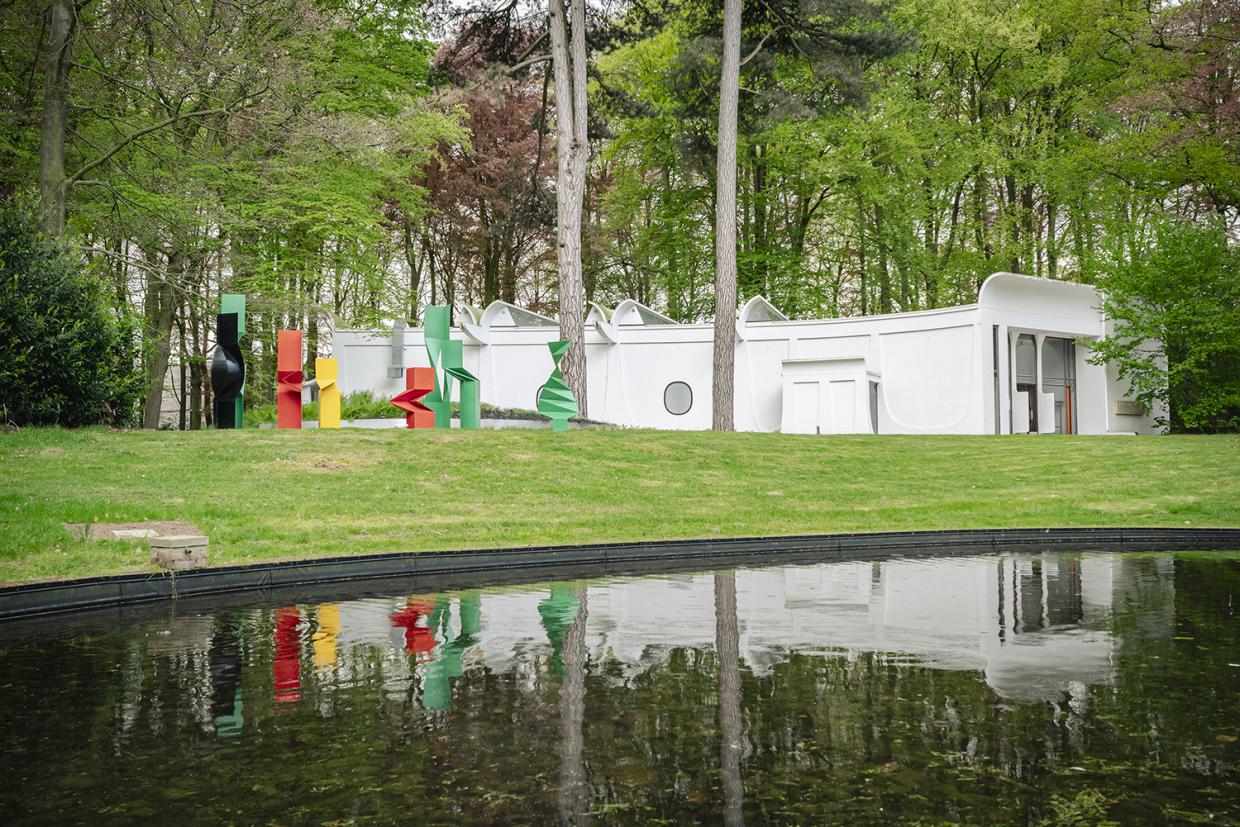
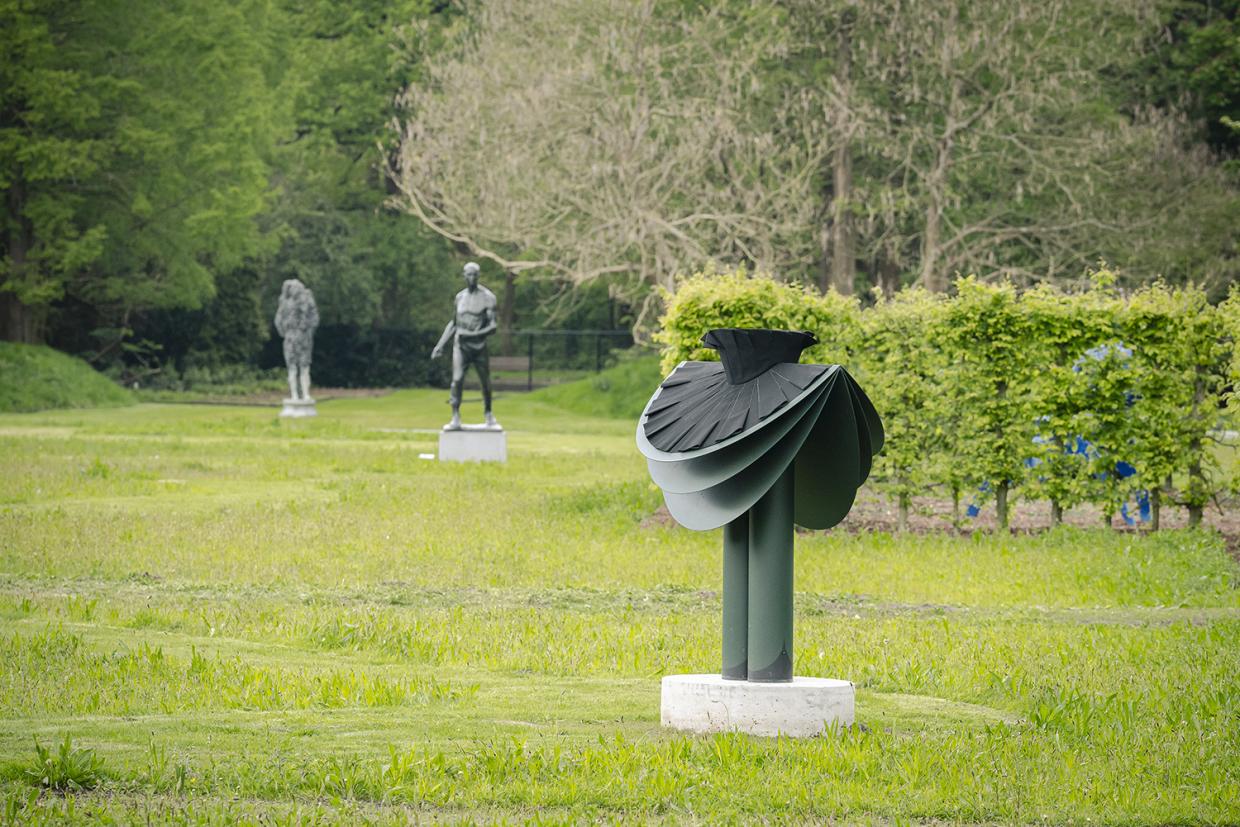
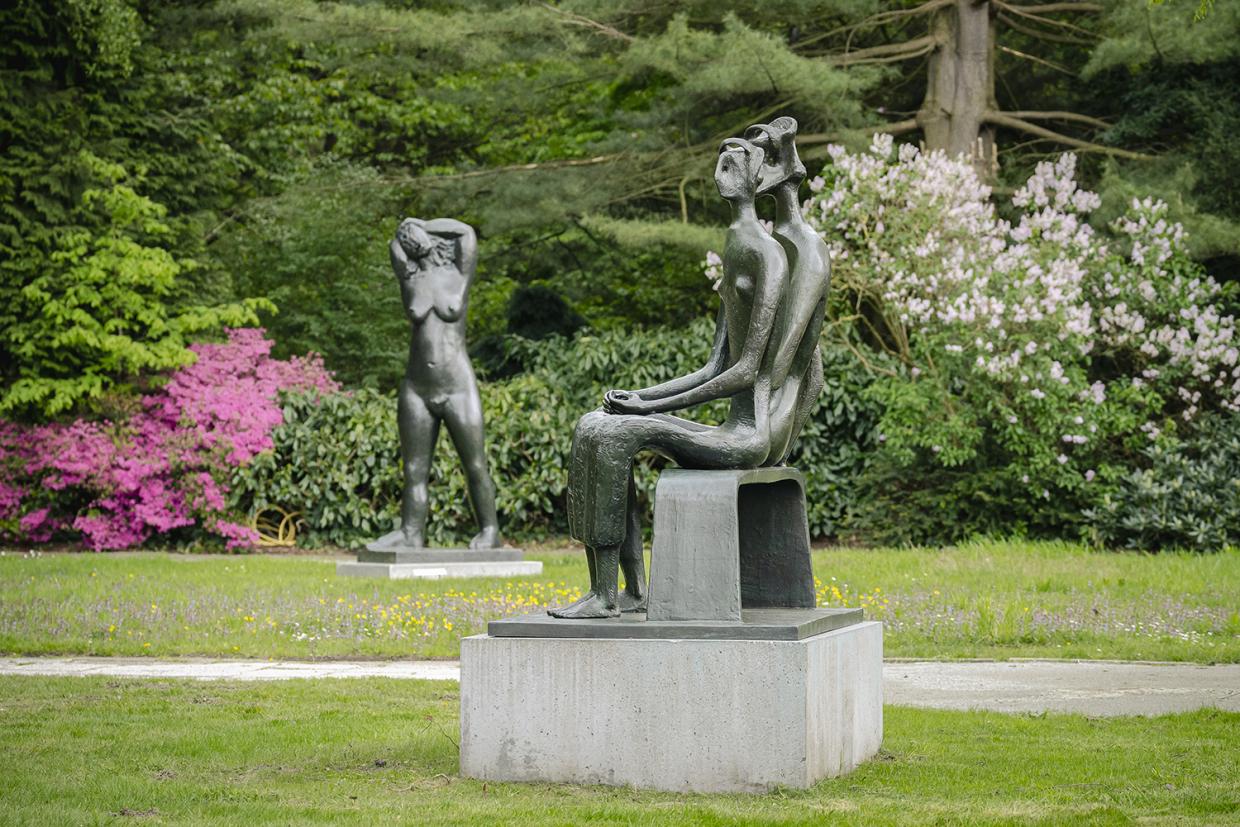
Renewed collection presentation
Thematic presentation
After 75 years, it was time to revalorise the identity of the museum and the historical park. The collection presentation and the park were thoroughly rethought. More than 200 sculptures were moved to another spot in the art park.
The artworks were arranged thematically, in relation to the surrounding landscape. Pavement was replaced with grass and plants wherever possible. In their new locations, surprising connections arise between the sculptures, the park and the visitors.
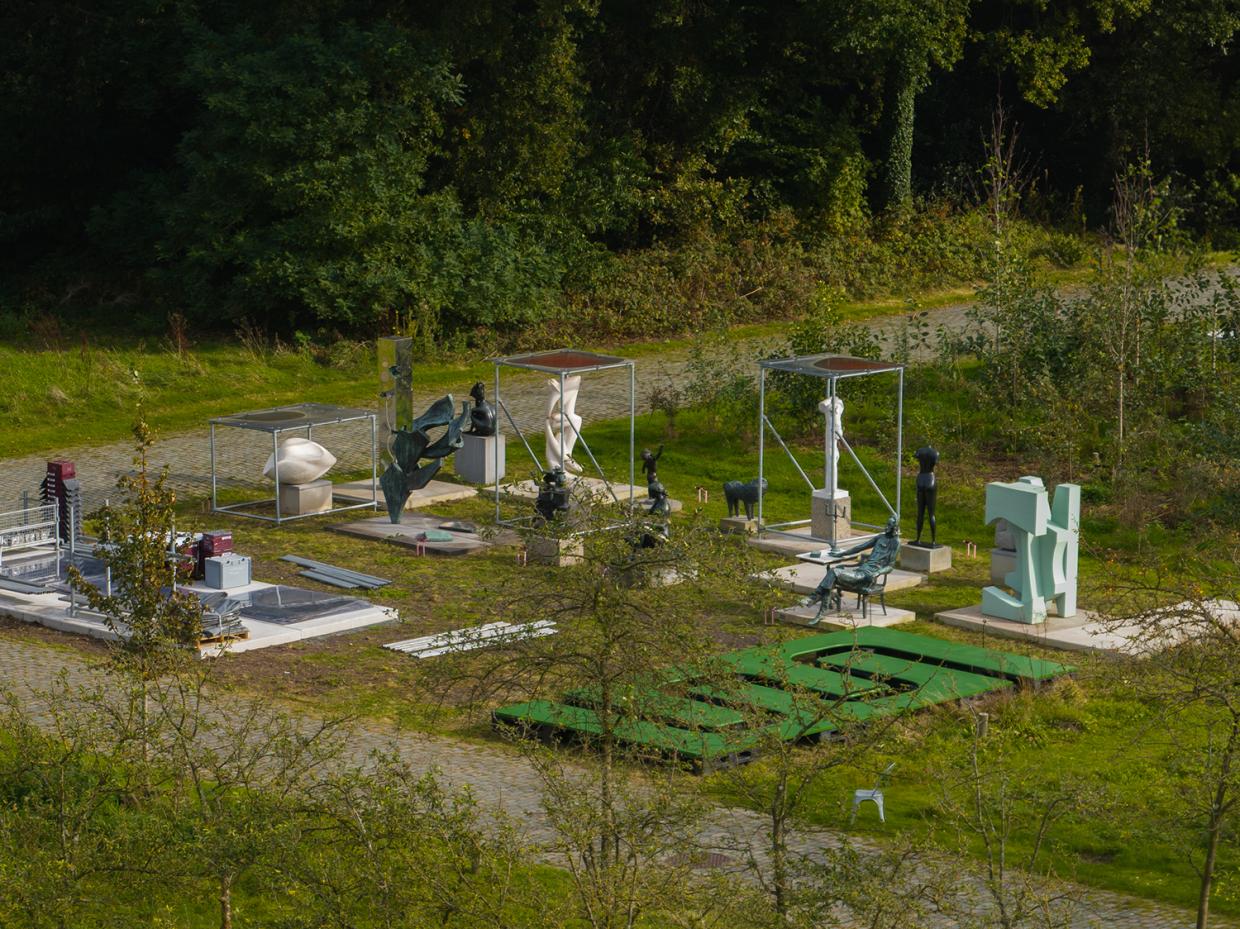
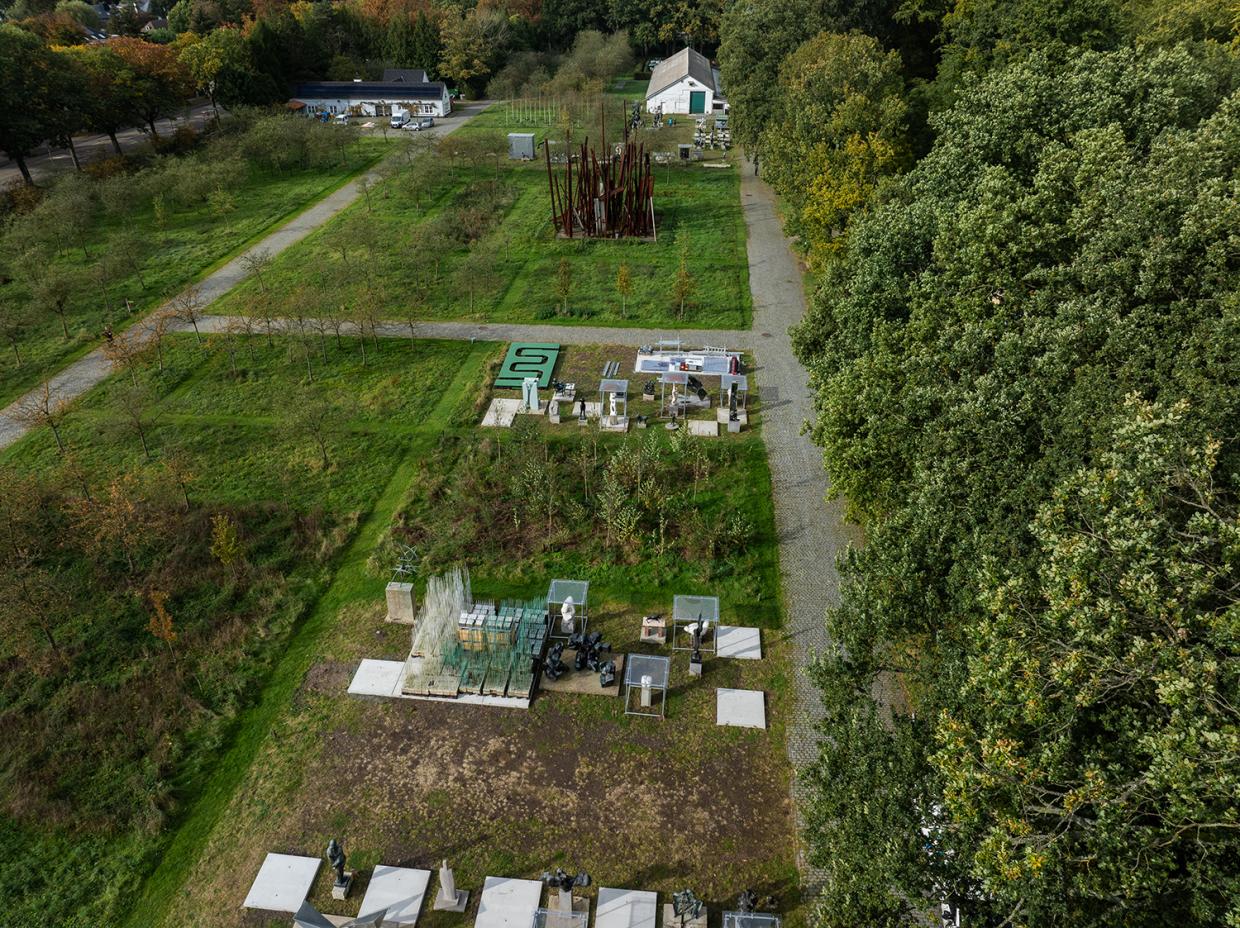
Open-air depot
Always visible
The new presentation includes some 180 artworks, 105 works from the previous presentation were moved to a new and unique open-air depot. The museum chose not to hide these artworks.
Visitors often have a favourite work and a close relationship with the museum park. In this setting the sculptures no longer included in the formal presentation remain visible. The sculptures at the open-air depot are mostly weatherproof.
Sustainable development
This depot is located in the museum next to the historical park. The open-air depot was designed in collaboration with a landscape architect and conservators. The soil consists of lava substrate with a mixture of flowers and herbs. On this, heavier machinery can be driven, necessary when relocating sculptures. The lava substrate maximally absorbs rainwater and counteracts erosion.
In this museum zone, 50 trees and 2000 additional bushes were planted. The museum bees also moved along and provide honey.
Minimal impact on climate
Maximum accessibility
All aspects of the design took into account minimising the impact of museum storage practice on the climate and maximising the re-use of materials. By housing the depot on the museum site, transport is limited to the museum grounds. Maximum accessibility of all sculptures is guaranteed during replacement.
The pedestals from the old presentation were reused as much as possible both in the new collection presentation and on the depot. Restorations and maintenance of the collection are carried out on site.
Winter protection
In recent years, the most fragile works in the collection have been given a new winter packing/protection. This consists of scaffolding material and a transparent roof. Even packed, the sculptures remain visible.
At the depot, the choice is made to leave these structures in place in summer. In winter, the sides are covered with semi-transparent cloths.
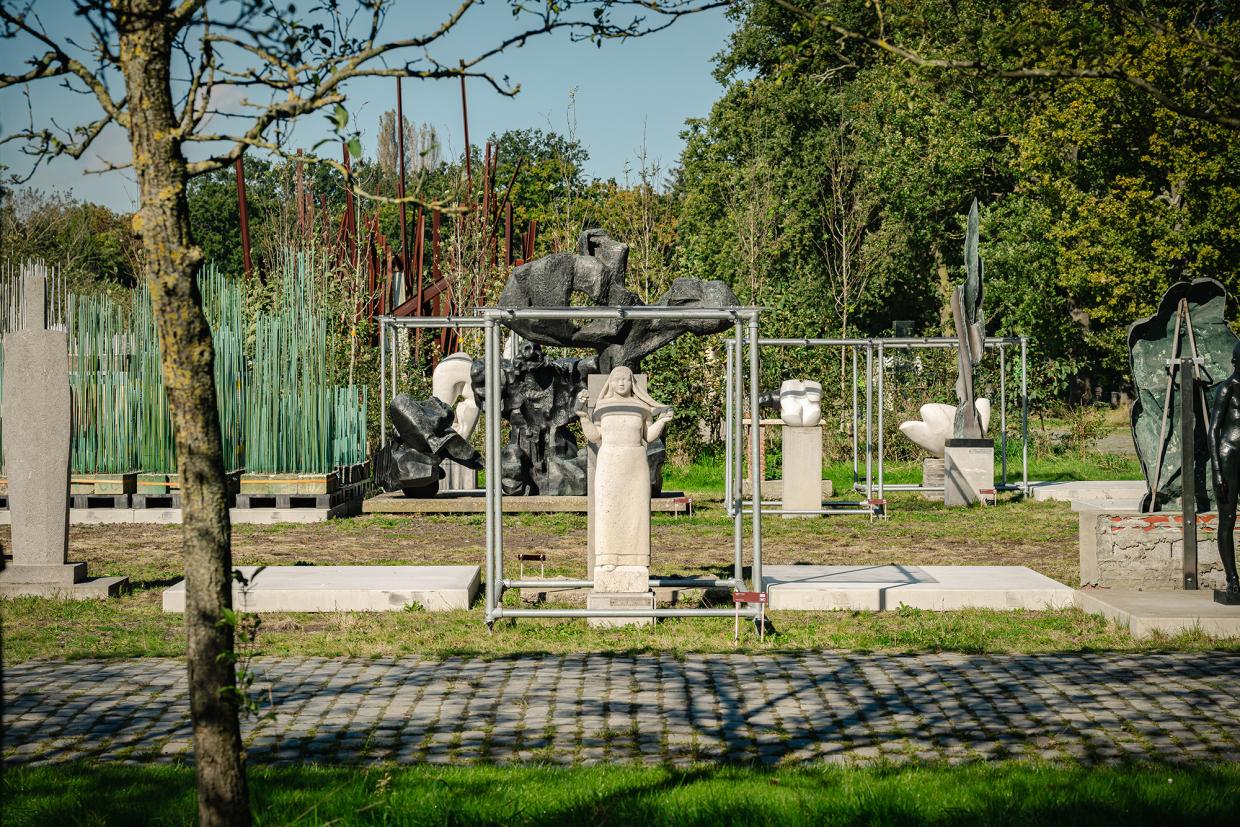
Indoor depots
Fragile supporting collections
Besides sculptures, the museum collects various supporting collections including 60.000 art books and publications, drawings, photographs, media-art, models, scale models and small sculptures. Of course, these cannot be stored outdoors.
Low impact indoor depot
In 2017, a simple depot was built in an existing shed on the museum site with minimal impact on greenhouse gas emissions and maximum reuse of materials. The existing floor was retained. The walls of the new box are airtight, thermally insulating and have high fire resistance.
In terms of technology, a dehumidifier with adsorption wheel and a recirculation unit with air filter were installed. The temperature in this indoor depot changes according the seasons but the relative humidity is very stable.
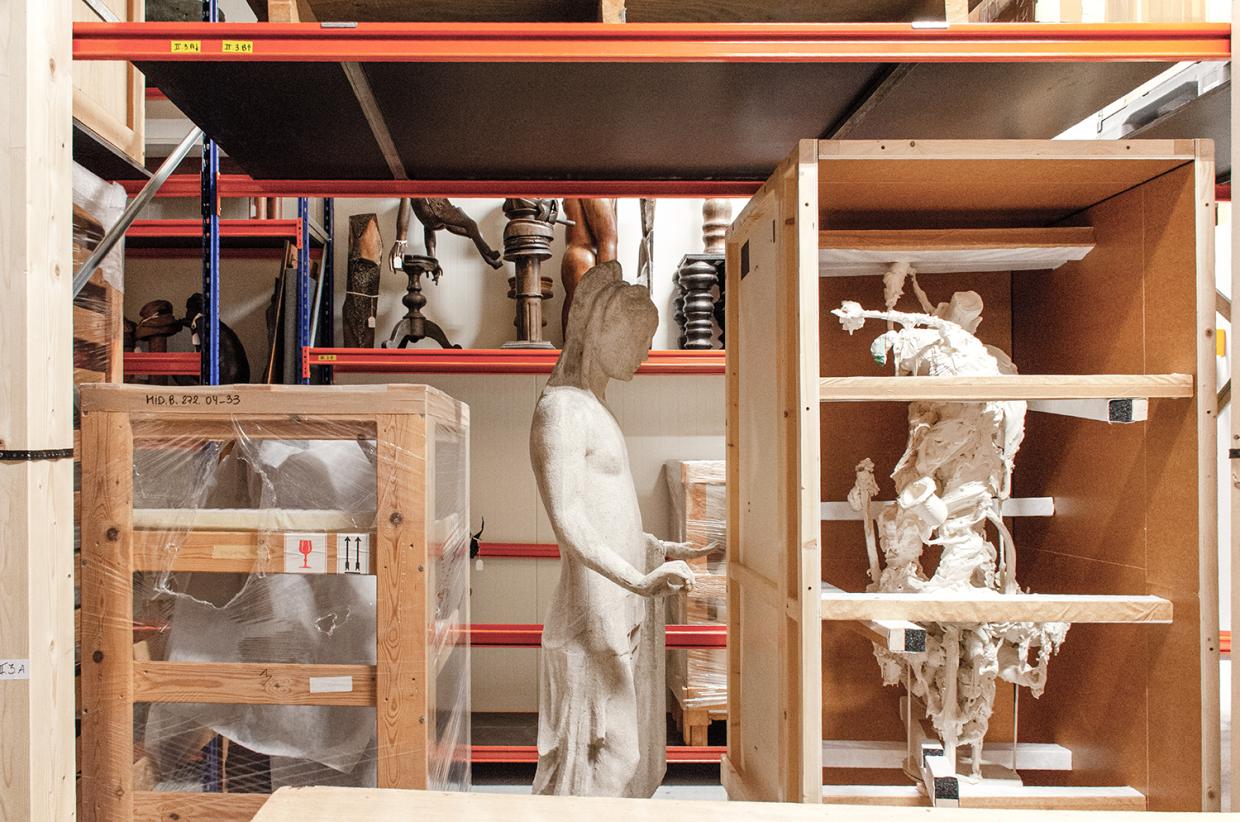
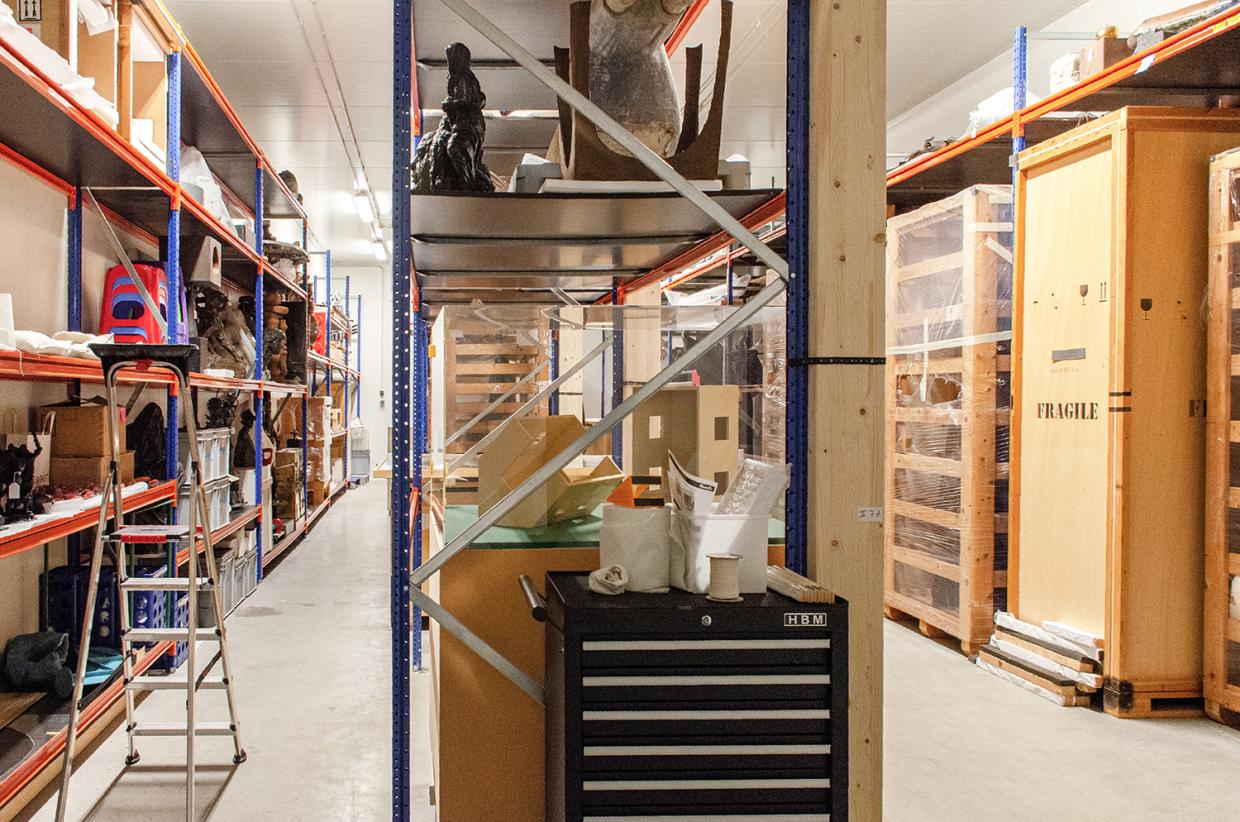
Collection Pavilion
Since 2019, 50 works from the storage collection have been presented in the Collection Pavilion. The former depot was thoroughly renovated and the physical performance of the building shell enhanced, in order to create a stable environment according to Bizot standards.
In spring 2024, the 50 works were partly replaced by other small sculptures. These are now visible in showcases. At the same time, about half of the monographs and art publications were moved to this pavilion. Visitors can now take a look in a large part of the library collection without having to make an appointment.
Further challenges
Besides the physical accessibility of as many collection items as possible, work was done on the digital accessibility of the collection and new wayfinding through the museum park.
Due to many challenges, not everything ran at the same pace. This sometimes made it difficult for visitors to find their way around. Visitors communication is an important and ongoing concern with such major changes. On the other hand, despite all the internal moves, excavations and restorations, the entire museum remained open at all times.
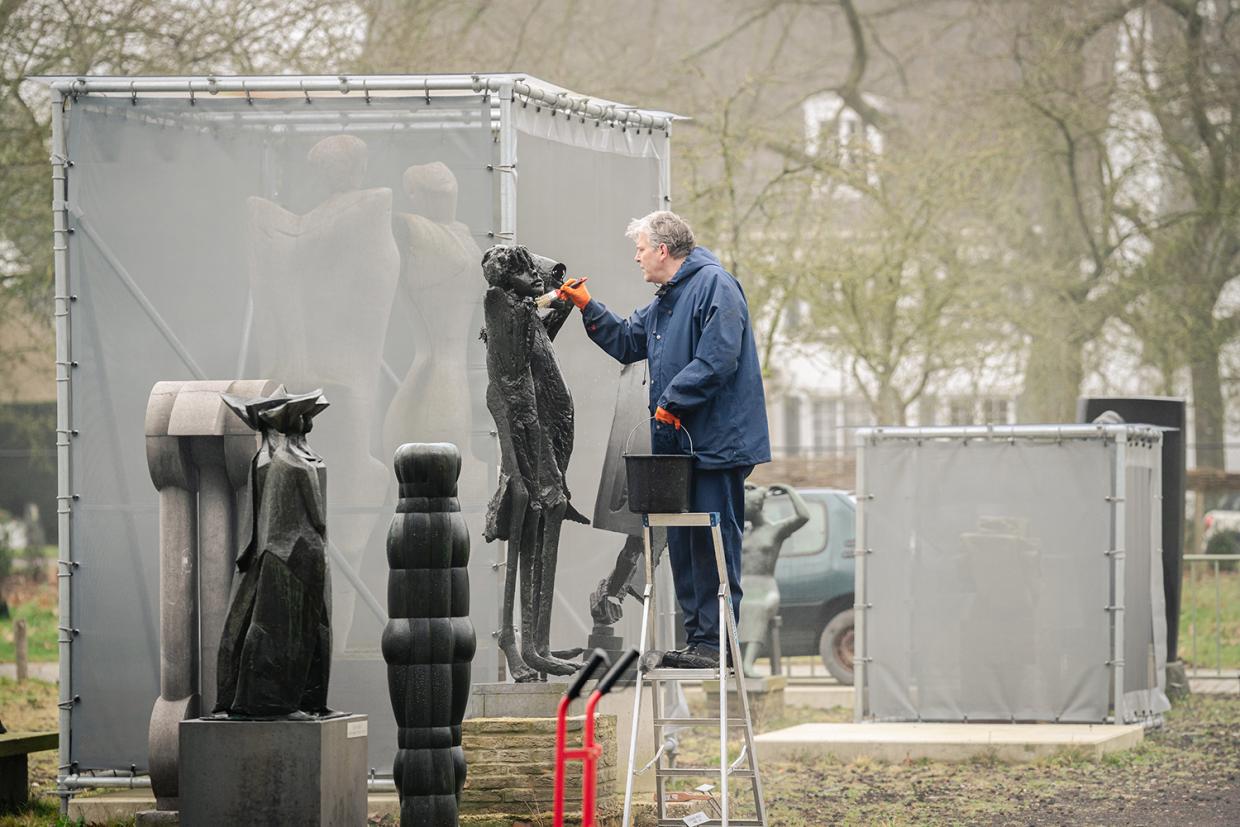
Many thanks to our partners
Open-air Depot
Tak Landschapsarchitecten, Lapis Arte, Joeri Van den Bossche Grondwerken, Etoile Mécanique, Metafose, Groendienst Stad Antwerpen
Indoor depot (2017)
Helicon (Object Care), AG Vespa
Collection Pavillion
2000: Stéphane Beel
2019: RADAR architecten, AG Vespa, Verstraete Vanhecke nv
2023: B-Bisarchitecten, Van Hout Pro, AG Vespa, Blackbirds, Etoile Mécanique
